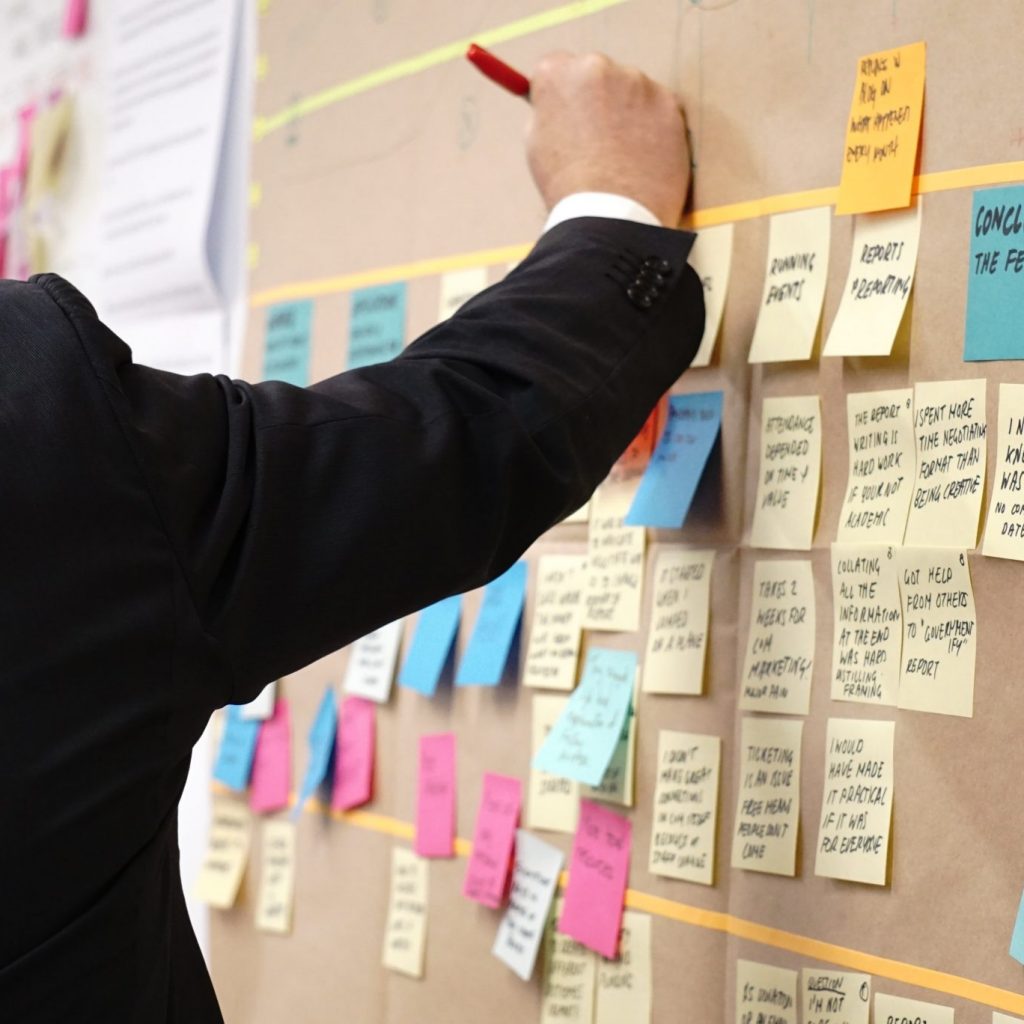As we grow in our careers, we experience more complex projects.
At times, we even start projects whilst in the middle of an ongoing one.
Quickly, we get overwhelmed and our health may suffer. Chronic stress, insomnia, loss of appetite, etc..
The source of the overwhelm
At the heart of the problem, is the uncertain nature of the project, and the lack of control you feel over it.
When you have a limited amount of time, and the exact sequence of tasks is not clear you get stressed.
When new information about that project comes in, and you keep it in the back of your head, you’ll feel stressed.
Take control over the project
The first step is to sit down and visualize the project in detail.
List all the tasks at hand
First, list all the tasks that come to your mind, without focusing on their sequence. They may be in random order, it’s not a big deal.
What is more important is to be exhaustive and list the tasks without fear of missing some.
The unloading of the tasks will immediately feel like a relief.
Sort them to form a sequence
Secondly, you want to sort the task in a sequence that’s most logical.
You link the tasks by making a graph like a PERT or in a list, it does not matter.
The important is that you exactly visualize the output of a task coming in when done in the input of the next task.
Time the project
Thirdly, you want to put a rough estimate of the time you’ll need to carry out each task, allowing yourself a proper amount of time in between each task (it’s called slack).
Taking it to the next level
Now, you have unloaded your brain with all the anxiety of forgetting something by making a list, feel relieved because you have a sequence and a timeline.
Removing the layer of unnecessary tasks and complexity
The next step is to take some distance from your project, and walk through each task, and ask yourself: what can I do with this task, that will make all the other tasks easier or unnecessary?
As a human, we like to make things more complicated than they already are, as we worry about being exhaustive.
We add up layers of complexity in things that could be very simple. If will happen for each day, and each task that we have to carry out.
By asking ourselves that question, we look at our project with a critical eye and ponder whether we have been excessive in certain areas and we aren’t asking too much for a specific task:
- Is that task required?
- Can I make this task easier?
- Do I need to produce 100% of the output or 80% could be enough? Example extracting a table with calculations that are interesting but not critical.
- If I remove this task, how will it hinder my progress on the next task?
As we finish that exercise, we end up with a lighter project, we feel in control and have a clear vision of what needs to be done.
The anxiety should be gone, as well as stress and sleeplessness.
Iterate again when you were in the project
As you start each task of your project, you can iterate again and ask yourself: what can I make today that will make everything else easier or unnecessary?
Having progressed in the project, opportunities for simplification may arise as we have completed a task, we have more information in hand, we understand the details better.
And by now, you should not only have better control, better health, a super-fast pace, and last but not least, effectiveness.
